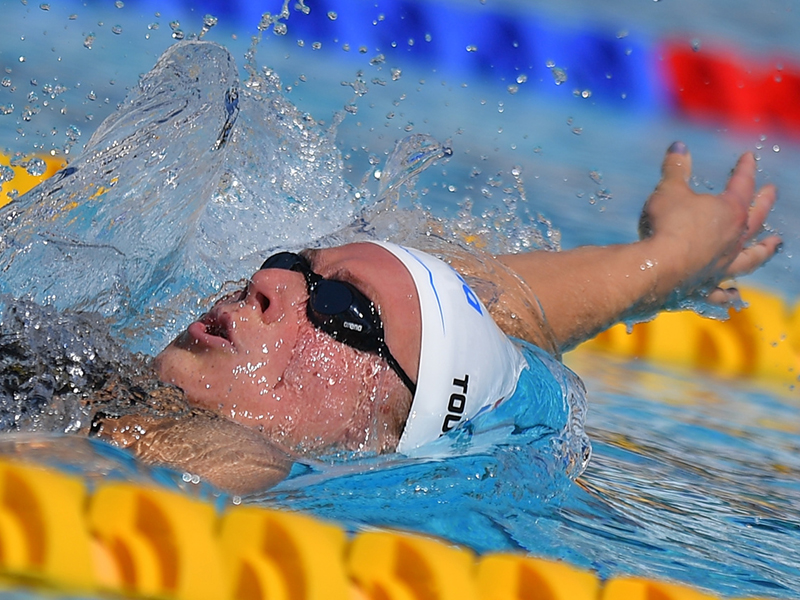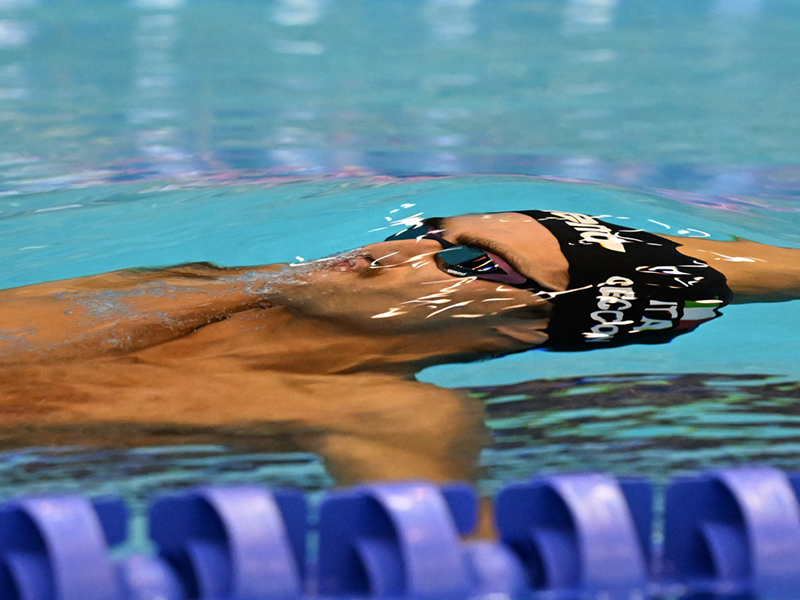Learn the backstroke breathing technique
One of the distinctive things about backstroke swimming is that your breathing is not really affected by the water: we swim with our stomachs facing upwards and we decide when we want to breathe, there is no danger of swallowing water due to bad timing.
But that does not mean you can breathe whenever you like.
Technically speaking the right time to breathe is:
- Inhale: during the recovery phase of one arm
- Exhale: at the end of the recovery phase of the other arm.
It is important to breathe out quickly and forcibly,
because you will not float so well if you breathe out slowly during the pull phase of the first arm stroke.
When we breathe out our chest increases in size as our lungs expand (without affecting our body weight). This, in turn, makes us float better.
It should be pointed out that it is only our upper body that floats better as the centre of our body volume shifts towards our head causing our feet to sink slightly.
This means you should avoid “inflating” your lungs to the maximum, always trying to keep your breathing under control in accordance with amount of air you breathe in and the rate at which you do it.
Here are some useful drills for learning how to control your breathing:
1. Swim the backstroke with one arm only, breathing in during the recovery phase and breathing out during the pull.
2. Swim the backstroke breathing normally for one complete stroke and then not breathing at all during the next stroke.
3. Swim the backstroke breathing steadily, first making two complete arm strokes very slowly and then two strokes very quickly.
4. Swim the backstroke, pausing for 2” in your arm stroke when your recovery hand is out in front of your face; at this point hold your breath for the 2” pause and then get back into both your stroke and ordinary breathing pattern.
5. Over very short distances (12-15 m): swim the backstroke with a very high breathing rate (hyperventilation). Make sure you do not breathe in too much air.
6. Swim the backstroke with very slow arm strokes, dividing your breathing-in pattern into 3 phases:
- when you hand comes out of the water
- when it is extended in front of your face
- when it is about to enter the water
and also your breathing-out pattern into 3 phases (same routine as above).
Breathing incorrectly and poor distribution of the CO2/O2ratio (carbon dioxide/oxygen) results in incomplete metabolite distribution around the body, inevitably causing you to tire more quickly.
But that is no problem for us: we have drills to teach us how to avoid making these mistakes 🙂
Written by:
arena coaches
Swim coaches, trainers and experts will give you all kinds of tips for performing at your best in both training and races.









